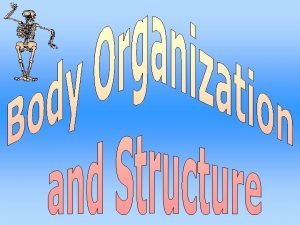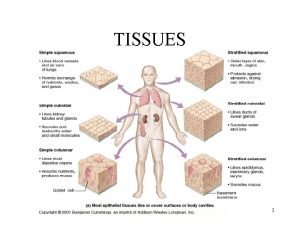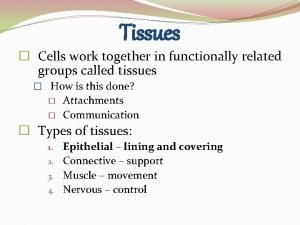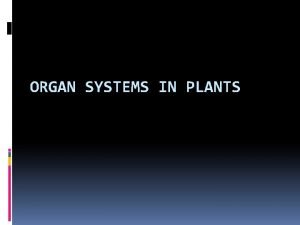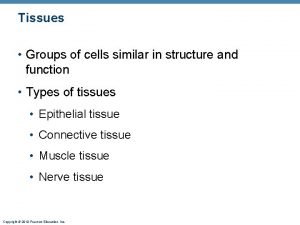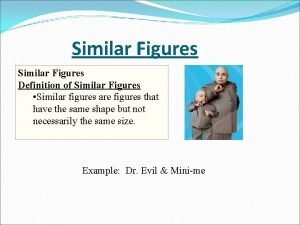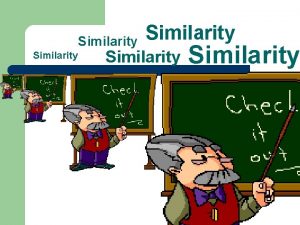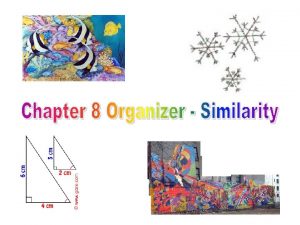A group of similar cells working together forms












- Slides: 12


• A group of similar cells working together forms a tissue. • Your body contains four main types of tissue • Epithelial tissue • Connective tissue • Muscle tissue • Nervous tissue

• Covers and protects underlying issue. • When you look at the surface of your skin, you see epithelial tissue. • The cells stick tightly and form a continuous sheet.

• Sends electrical signals through the body • It is found in the brain, nerves, and sense organs

• Is made of cells that can contract and relax to produce movement.

• Joins, supports, protects, insulates, nourishes, and cushions organs. • It also keeps organs from falling apart

• Two or more tissues working together from an organ. • One type of tissue alone cannot do all the things that several types working together can do.

The stomach is an organ • The four types of tissue work together so that the stomach can carry out digestion – Nervous tissue in the stomach partly controls the production of acids that aid in the digestion of food. Nervous tissue signals when the stomach is full. – Epithelial tissue lines the stomach. – Layers of muscle tissue break up stomach contents – Blood and a connective tissue called collagen are found in the wall of the stomach.

Organs Form Systems • Your stomach does much to help you digest your food, but it doesn’t do it all. • It works together with other organs, such as the small intestine and large intestine, to digest your food.

• Integumentary system – Skin, hair, and nails protect underlying tissue • Muscular system – Skeletal muscles move your bones • Skeletal system – Bones provide a frame to support and protect body parts • Cardiovascular system – Heart pumps blood through all your blood vessels

• Respiratory system – Lungs absorb oxygen and release carbon dioxide • Urinary system – Removes wastes from the blood and regulates the body’s fluids • Reproductive system (male) – Produces and delivers sperm • Reproductive system (female) – Produces eggs and nourishes and shelters the unborn baby

• Nervous system – Receives and sends electrical messages throughout the body • Lymphatic system – Returns leaked fluids to blood vessels. It also helps you get rid of germs that can ham you • Digestive system – Breaks down the food you eat into nutrients that can be absorbed into your body. • Endocrine system – Glands regulate body functions by sending out chemical messengers. The ovaries, in females, and testes, in males, are part of this system
 Cells working together form
Cells working together form Tissues are groups of similar cells working together to
Tissues are groups of similar cells working together to Tissues are groups of similar cells working together to
Tissues are groups of similar cells working together to Tissues are groups of similar cells working together to:
Tissues are groups of similar cells working together to: Group of cells working together
Group of cells working together Tissues group together to form
Tissues group together to form A group of organs working together
A group of organs working together Groups of cells that are similar in structure and function
Groups of cells that are similar in structure and function Joining together group theory and group skills
Joining together group theory and group skills Development of paranasal sinuses
Development of paranasal sinuses Transport maximum
Transport maximum Pineal gland
Pineal gland Somatic cells vs gametes
Somatic cells vs gametes
